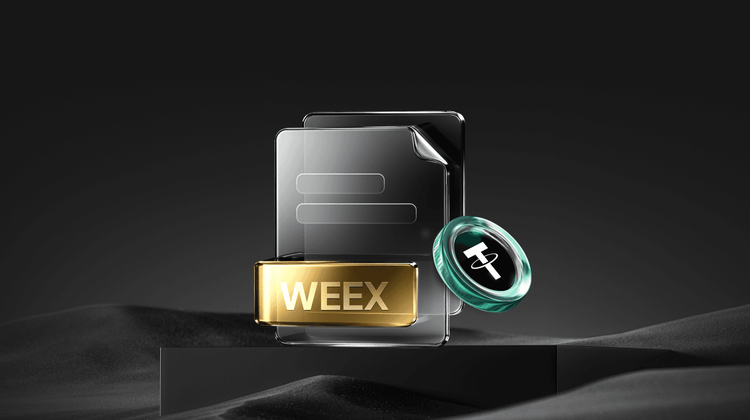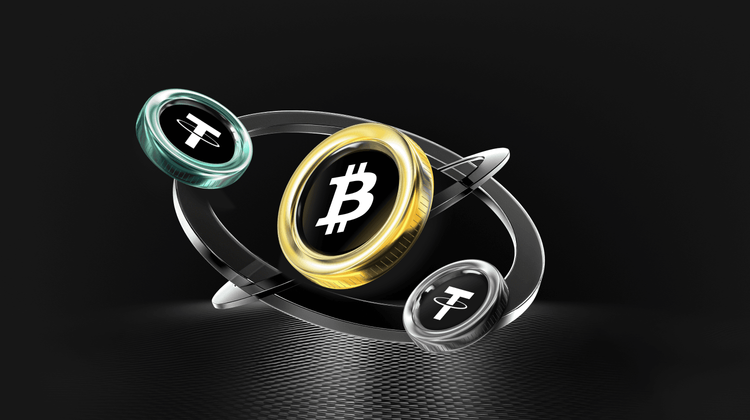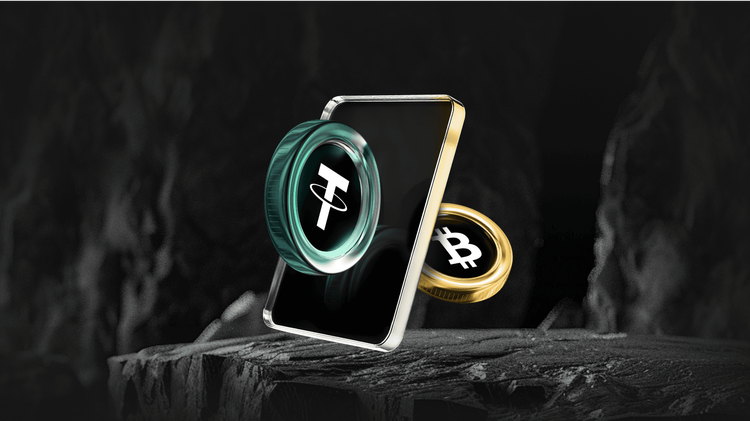What is Filecoin? A Comprehensive Guide
Key Takeaways
- Filecoin is a decentralized storage network that allows users to store and retrieve data securely using blockchain technology, essentially acting as a peer-to-peer alternative to traditional cloud storage services like Amazon S3.
- Its core mechanism revolves around proof-of-replication and proof-of-spacetime, where miners compete to provide storage space and are rewarded with FIL tokens, ensuring data integrity and availability over time.
- Key advantages include decentralization, which reduces reliance on single entities, cost-effectiveness for long-term storage, and integration with IPFS for efficient file sharing, making it ideal for applications needing reliable, censorship-resistant data storage.
- Use cases span from personal file backups to enterprise-level data archiving, DeFi integrations, and even NFT storage, with a focus on scalability through features like the Filecoin Virtual Machine (FVM) for smart contracts.
What Is Filecoin?
Filecoin is a decentralized storage system designed to store humanity’s most important information by creating a marketplace where users can buy and sell storage space on a blockchain network.
Imagine you’re tired of paying hefty fees to big tech companies for cloud storage, and you worry about your data being censored or lost if the company goes under. That’s where Filecoin comes in—it’s like a global, open-source hard drive powered by thousands of computers worldwide. Launched after a massive 2017 ICO that raised $205 million, Filecoin finally went live with its mainnet in October 2020 at block 148,888. The project stems from Protocol Labs, the same folks behind IPFS (InterPlanetary File System), which is basically a super-efficient way to share files across the internet without central servers.
At its heart, Filecoin’s core concept is to incentivize a network of storage providers (miners) to offer space and retrieval services using its native token, FIL. This creates an ecosystem where data isn’t just stored—it’s proven to be safe and accessible through clever cryptographic proofs. The network operates on its own blockchain, using proof-of-replication to ensure unique copies of data and proof-of-spacetime to verify storage over time. It’s all open-source, with governance in the community’s hands, allowing developers to build services rivaling Dropbox or iCloud but without the middleman. Today, as of August 20, 2025, Filecoin ranks #52 by market cap, with a price of $2.41 USD and a total market value of $1,637,341,539 USD. It’s not just about storage; recent additions like the Filecoin Virtual Machine have expanded it into programmable smart contracts, blending storage with DeFi possibilities.
Origins and Background
Filecoin’s story starts back in 2014 as an extension of IPFS, proposed by Juan Benet and his team at Protocol Labs. They envisioned a world where data storage isn’t controlled by a few giants but distributed across a resilient network. The whitepaper outlined how to layer incentives on IPFS to make storage reliable and economically viable.
Founding Team and Proponents
Juan Benet, a computer scientist with a Stanford background, leads Protocol Labs. He’s passionate about decentralized systems, having worked on projects like IPFS before Filecoin. The team includes experts in cryptography, distributed systems, and economics, drawing support from investors like Sequoia Capital and Andreessen Horowitz during the ICO.
Core Concept and Ecosystem
Filecoin’s ecosystem thrives on miners and clients negotiating deals via smart contracts. It’s integrated with IPFS for fast retrieval, and tools like the FVM allow for custom apps. Think of it as Airbnb for your digital files—anyone can rent out space or store data, fostering a vibrant, growing network.
FAQs on Filecoin Basics
- What makes Filecoin different from regular cloud storage? Unlike centralized services, Filecoin spreads your data across many nodes, making it more secure and resistant to failures or censorship.
- Is Filecoin the same as IPFS? No, IPFS handles file sharing, while Filecoin adds the economic layer to ensure long-term storage through incentives.
Who Created Filecoin?
Filecoin was born from the innovative minds at Protocol Labs, founded by Juan Benet in 2014. Benet, a tech visionary with degrees in computer science from Stanford, saw the flaws in centralized data storage and dreamed up a decentralized alternative. Before Filecoin, he created IPFS, which laid the groundwork by enabling peer-to-peer file sharing. The project gained traction when Protocol Labs released the Filecoin whitepaper in 2017, detailing how to build an incentive system on top of IPFS using blockchain.
The founding team isn’t just Benet—it’s a powerhouse of talent. Key figures include engineers like Jeromy Johnson and Matt Ober, who focused on the protocol’s cryptography and network design. They drew from diverse backgrounds in distributed systems, having worked at places like Google and startups in the blockchain space. Protocol Labs operates as an open-source research lab, encouraging contributions from global developers, which has built a strong, collaborative community.
Historically, Filecoin’s journey kicked off with that record-breaking ICO in 2017, raising $205 million from investors excited about decentralized storage. But launches don’t always go smoothly—the mainnet was delayed from mid-2019 to October 2020, hitting block 148,888 after rigorous testing. Milestones include the integration of proof-of-spacetime in 2018, the launch of testnets, and more recently, the Filecoin Virtual Machine in 2023, which supercharged its capabilities for smart contracts. It’s like watching a startup evolve from a garage idea to a global network, with ongoing upgrades keeping it relevant in the fast-paced crypto world.
Project Origins and Whitepaper
The origins trace back to a 2014 paper by Benet, proposing Filecoin as IPFS’s missing piece for persistent storage. The whitepaper, released in July 2017, dives into the economics, with models for miners earning FIL by proving storage.
Historical Milestones
From ICO hype to mainnet launch, Filecoin hit key points like the 2020 liftoff and partnerships with chains like Ethereum for cross-chain storage. By 2025, it’s matured with features like FVM, expanding beyond storage.
FAQs on Filecoin’s Creation
- Why was the mainnet delayed? Testing for security and scalability pushed it back, ensuring the network could handle real-world use without hiccups.
- Who funds Protocol Labs? Early backers include top VCs, and the ICO provided the bulk, but it’s now sustained by the ecosystem’s growth.
How Does Filecoin Work?
Picture your hard drive, but instead of one device, it’s a vast network of computers worldwide, all competing to store your files safely. That’s Filecoin in action. At its core, it uses a blockchain to record storage deals between clients (who need space) and miners (who provide it). The blockchain is custom-built, relying on proof-of-replication and proof-of-spacetime consensuses—fancy terms for proving that data is uniquely copied and stored over time without wasting energy like Bitcoin’s proof-of-work.
When you upload a file, it’s broken into pieces, each with a unique ID (CID) via IPFS. Clients post deals on the network, and miners bid to store them, sealing the data in “sectors” with cryptographic proofs. Smart contracts handle the agreements, automating payments in FIL. Retrieval is fast because miners compete to deliver data quickest, earning fees. Public and private keys secure everything: your private key signs deals, while public keys verify identities. It’s decentralized, so no single point of failure, and open protocol means anyone can join.
Recent tech like the Filecoin Virtual Machine (FVM) adds programmability, letting developers build apps on top, similar to Ethereum but focused on storage. InterPlanetary Consensus helps scale by creating subnets for efficiency. Ever wondered why your cloud backups feel clunky? Filecoin streamlines it with blockchain magic, making storage as easy as sending an email.
Blockchain and Consensus Mechanisms
Filecoin’s blockchain uses proof-of-replication to ensure data uniqueness and proof-of-spacetime for ongoing verification, blending security with efficiency—no massive energy use here.
Smart Contracts and Technical Principles
Deals are smart contracts on the chain, using keys for secure transactions. Private keys control your FIL, public ones broadcast actions.
FAQs on Filecoin Operations
- How does proof-of-spacetime work? Miners submit timed proofs showing they’re still holding data, like periodic check-ins to earn rewards.
- Can Filecoin integrate with other blockchains? Yes, through bridges and FVM, it plays nice with Ethereum and others for hybrid apps.
How Is New Filecoin Created?
New FIL tokens enter circulation through mining rewards, where storage miners earn them by providing verifiable storage to the network. It’s not like Bitcoin’s energy-hungry mining; here, usefulness drives creation. Miners commit storage space, seal sectors with data, and submit proofs to the blockchain. Successful proofs yield block rewards and deal fees in FIL.
The issuance model is inflationary but capped, with a total supply limit of 2 billion FIL. About 70% is allocated for mining rewards, released over time via a halving-like mechanism every six years, slowing inflation. Staking comes in too—miners pledge FIL as collateral, risking slashes for bad behavior, which encourages honesty. Rewards include block subsidies (new FIL minted per block) and tips for quick retrieval. As of August 20, 2025, with the network humming, this setup keeps supply predictable while incentivizing growth. It’s like paying landlords to maintain properties, but for digital space—keeps the ecosystem thriving without endless printing.
Issuance Method and Mining Mechanisms
Miners “mine” by storing data, earning FIL based on storage power, measured in bytes committed.
Inflation Model and Total Supply
Starts with high issuance, tapering off; max 2 billion FIL ensures scarcity over time.
FAQs on FIL Creation
- Is there a halving event? Yes, rewards halve every six years, similar to Bitcoin, to control supply.
- Can anyone mine FIL? Absolutely, with the right hardware and FIL collateral—it’s accessible but competitive.
What Are the Use Cases of Filecoin?
Filecoin shines in scenarios where reliable, decentralized storage is key. Think archiving important documents without fearing a server crash or censorship—perfect for journalists or activists. In DeFi, it’s used to store oracle data or smart contract states securely. NFTs benefit too; artists store metadata on Filecoin for permanence, unlike volatile centralized servers.
Cross-border transfers? Not directly, but it supports data-heavy apps like video streaming services that need cheap, global storage. Governance happens via community proposals funded by FIL. Enterprises use it for backups, saving costs over AWS. Even personal use: back up family photos knowing they’re distributed worldwide. With FVM, it’s evolving into a platform for programmable storage, like smart contracts that auto-renew deals. Ever lost files to a hard drive failure? Filecoin’s got your back, literally spreading copies across the globe for redundancy.
Payments and Value Storage
FIL pays for storage, acting as a utility token with value storage potential amid network growth.
DeFi, NFTs, and Governance
Integrates with DeFi for data vaults; NFTs use it for immutable storage; token holders vote on upgrades.
FAQs on Use Cases
- How does Filecoin help with NFTs? It stores the actual files behind NFTs, ensuring they’re not lost if a platform shuts down.
- Is it good for everyday users? Yes, apps like Slate make uploading files as simple as drag-and-drop.
How Can You Buy, Send, or Store Filecoin?
Getting started with Filecoin is straightforward, like dipping your toes into crypto waters. To buy FIL, head to exchanges—WEEX Exchange is a trusted spot, offering seamless trading with low fees. Register on WEEX to snag a free 20 USDT bonus, making it easy to jump in. They support pairings like FIL/USDT for quick buys.
For sending, use a wallet: hot ones like Lotus (official Filecoin wallet) for daily use, or cold wallets like Ledger for security. To store, generate a wallet address, transfer FIL via the network (fees in FIL, naturally). Security tip: enable 2FA and never share private keys. Operational flow? Buy on WEEX, withdraw to your wallet, and send by entering the recipient’s address—confirm transactions on the blockchain explorer.
https://www.weex.com/how-to-buy
It’s user-friendly, but always double-check addresses to avoid mishaps. Remember that friend who sent crypto to the wrong wallet? Don’t be them—use test sends for small amounts.
Purchasing Channels and Wallets
Exchanges like WEEX, or OTC for large buys; wallets range from mobile apps to hardware.
Storage Security and Processes
Use cold storage for long-term holds; back up seed phrases securely.
FAQs on Buying and Storing
- What’s the safest way to store FIL? Hardware wallets like Ledger, kept offline.
- How long do transfers take? Usually minutes, depending on network congestion.
Pros & Cons / Risks
Filecoin has its ups and downs, like any crypto project. Let’s break it down honestly.
Advantages
- Decentralization: No single company controls your data, reducing censorship risks—great for privacy lovers.
- Security: Proofs ensure data integrity; it’s tamper-proof, like a digital vault.
- Cost-Effectiveness: Often cheaper than traditional cloud for long-term storage, with competitive miner bidding.
- Scalability: Features like FVM and subnets allow growth without bottlenecks.
- Integration: Pairs seamlessly with IPFS and other chains, expanding usability.
Risks and Cons
- Volatility: FIL’s price swings wildly—up 8.27% in 24 hours as of August 20, 2025, but it could drop just as fast.
- Regulatory Uncertainty: Governments might crack down on decentralized storage, especially for sensitive data.
- Technical Risks: Bugs in proofs or network could lead to data loss, though rare.
- Competition: Faces rivals like Arweave or Sia, potentially splitting the market.
- Adoption Hurdles: Not as user-friendly for non-techies yet, slowing mainstream uptake.
Weighing these, it’s promising but not without bumps—do your homework.
Comparison
Filecoin stands out in the storage crypto niche, but how does it stack against giants? Compared to Bitcoin, which is pure digital gold with proof-of-work, Filecoin focuses on utility via storage proofs, making it more about function than just value store. Ethereum, with its smart contracts, is broader, but Filecoin’s FVM adds similar programmability tailored to data. Versus Arweave’s permanent storage (pay once, store forever), Filecoin offers renewable deals for flexibility. It’s like choosing between a savings account (Bitcoin) and a full-service bank (Filecoin)—positioned for practical, everyday crypto use.
Conclusion / Next Steps
Filecoin’s potential lies in revolutionizing how we store data, potentially powering Web3 with secure, decentralized alternatives to big tech. As adoption grows, features like FVM could make it a DeFi-storage hybrid, with partnerships expanding its reach. For deeper dives, check the official whitepaper or roadmap on Protocol Labs’ site. Join the community forums to stay updated—it’s a great way to learn hands-on. If you’re intrigued, why not explore buying some FIL and testing a storage deal? The future of data might just be in your hands.
Market & Ecosystem
Filecoin’s market and ecosystem reflect its steady presence in crypto, with active trading and growing integrations. As of August 20, 2025, it’s a solid player, backed by real utility.
Market Cap & Trading Volume
Currently at $1,637,341,539 USD market cap, with 24-hour volume of $191,609,120 USD—showing lively interest despite market fluctuations.
Exchanges Where It’s Listed
Available on major platforms like Binance, Coinbase, and WEEX Exchange, plus decentralized ones like Uniswap for FIL pairs.
Community Size & Activity: Twitter, Reddit, Telegram, etc.
Boasts over 200,000 Twitter followers (@Filecoin), a bustling Reddit (r/Filecoin) with 50,000+ members, and Telegram channels humming with developer chats—community drives governance and updates.
Ecosystem Growth: Partnerships, Developer Activity
Partnerships with Ethereum and Polkadot boost interoperability; developer activity is high, with thousands contributing to GitHub repos. Growth includes DeFi integrations and tools like FVM, attracting builders worldwide.
What’s the Latest News of Filecoin?
Since the provided news summaries do not contain any items directly related to Filecoin, there are no recent updates to report in this section based on the available data. For the most current news, consider checking official Filecoin channels or trusted crypto news sources.
You may also like

Aave’s $10M Token Purchase Raises Concerns Over Governance Power
Key Takeaways: Aave founder Stani Kulechov’s $10 million AAVE token purchase sparks debates over governance power concentration. Concerns…

Web3 and DApps in 2026: A Utility-Driven Year for Crypto
Key Takeaways The transition to utility in the crypto sector has set a new path for 2026, emphasizing…

How to Evaluate a Curator?

Base's 2025 Report Card: Revenue Grows 30X, Solidifies L2 Leadership

From Aave to Ether.fi: Who Captured the Most Value in the On-Chain Credit System?

Venture Capital Post-Mortem 2025: Hashrate is King, Narrative is Dead

DeFi Hasn't Collapsed, So Why Has It Lost Its Allure?

NIGHT, with a daily trading volume of nearly $10 billion, is actually coming from the "has-been" Cardano?

2025 Token Postmortem: 84% Peak at Launch, High-Cap Project Turns into a "Rug Pull" Epicenter?

Polymarket Announces In-House L2, Is Polygon's Ace Up?

The Secret Centralization Landscape of Stablecoin Payments: 85% of Transaction Volume Controlled by Top 1000 Wallets

Stability in the Crypto World: Understanding Stablecoin Usage and Its Implications
Key Takeaways Stablecoin use in payments has rapidly increased alongside blockchain technology advancements. Stablecoins USDT and USDC dominate…

Major Cryptocurrency Exchange Updates and Insights
Key Takeaways Cryptocurrency exchanges are continually evolving, adapting to new technologies, and regulatory environments. Decentralized Finance (DeFi) is…

Understand Tokenization, Differentiating Between the DTCC Model and the Direct Ownership Model

Security Tokenization and Prediction Markets: 7 Major Crypto Boons to Watch in 2026

Aave Yield Distribution Dispute, Solana Surpasses Ethereum in Revenue, What's the Overseas Crypto Community Talking About Today?

<h1>The $3 Billion Valuation: Phantom’s Growth Anxiety and Cross-Chain Breakthrough</h1>

Messari 2026 Research Report: Insights into Seven Key Crypto Trends
Aave’s $10M Token Purchase Raises Concerns Over Governance Power
Key Takeaways: Aave founder Stani Kulechov’s $10 million AAVE token purchase sparks debates over governance power concentration. Concerns…
Web3 and DApps in 2026: A Utility-Driven Year for Crypto
Key Takeaways The transition to utility in the crypto sector has set a new path for 2026, emphasizing…
How to Evaluate a Curator?
Base's 2025 Report Card: Revenue Grows 30X, Solidifies L2 Leadership
From Aave to Ether.fi: Who Captured the Most Value in the On-Chain Credit System?
Venture Capital Post-Mortem 2025: Hashrate is King, Narrative is Dead
Popular coins
Latest Crypto News
Customer Support:@weikecs
Business Cooperation:@weikecs
Quant Trading & MM:bd@weex.com
VIP Services:support@weex.com
